
Often an unsung hero of pioneering new technologies, Volvo’s stylish and high-tech turnaround under Chinese manufacturing giant Geely is nothing short of incredible. Not so long ago, drivers in the market for a high-performance compact executive car would probably have defaulted to something with six cylinders and a German badge on the bonnet. Today, they’ve got an aspirational reason not only to go Swedish, but to opt for a plug-in hybrid when they do so.
Electrification is no half-measure. Volvo is arguably a little late to the game with a full EV – a battery-powered version of the ultra-desirable XC40 SUV is due this year – but it’s not a newcomer. Electric versions of the C30 hatchback were on the road a decade ago, while the V60 Plug-in Hybrid sold so well in its 2013 launch markets that it took an extra year for the UK to get its first cars. Volumes here weren’t huge, but it was an early example of electric driving being marketed on its performance credentials, as well as its CO2 performance. The new S60 and V60 are taking that formula up a notch or two.
Their hardware is familiar, but the experience is new. Volvo’s renewed compact executive cars share platforms and broadly the same drivetrain as the XC90, S90 and V90. Plug-in hybrids get a reputation as low-tax company car options, but the on- paper statistics here would make most fleet managers raise an eyebrow. A 303hp 2.0-litre supercharged and turbocharged petrol engine drives the front wheels, while a mechanically separate 87hp electric axle does the same job at the back. The result a fully-fledged performance car; faster to 62mph and more powerful than the old S60 and V60 Polestar, and with just as many driven wheels to help make the most of it.
Diese Geschichte stammt aus der Issue 28-Ausgabe von AutoVolt Magazine.
Starten Sie Ihre 7-tägige kostenlose Testversion von Magzter GOLD, um auf Tausende kuratierte Premium-Storys sowie über 8.000 Zeitschriften und Zeitungen zuzugreifen.
Bereits Abonnent ? Anmelden
Diese Geschichte stammt aus der Issue 28-Ausgabe von AutoVolt Magazine.
Starten Sie Ihre 7-tägige kostenlose Testversion von Magzter GOLD, um auf Tausende kuratierte Premium-Storys sowie über 8.000 Zeitschriften und Zeitungen zuzugreifen.
Bereits Abonnent? Anmelden
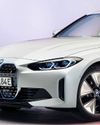
BMW Prices Up All-Electric i4 Saloon And iX SUV
DUE for UK launch in November 2021, BMW has released pricing details for the new all electric i4.

Volvo Trucks announces new family of heavy electric HGVs
VOLVO Trucks will boost its electric truck range in 2022, with the arrival of three more zero emission HGV models. Joining the FE and FL Electric trucks which are aimed at urban routes and use, the new FH, FM and FMX Electrics will cater for the heavier road transport sector.
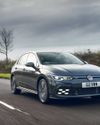
VOLKSWAGEN GOLF GTE
Can a hybrid hot hatch really deliver the best of both worlds? Alex Grant finds out.

REACH FOR THE SKIES
Electric flying racing cars have literally taken off, thanks to pioneering efforts from the Airspeeder team.
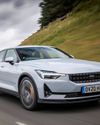
POLESTAR 2
With motorsport in its DNA, has Polestar cracked the electric driver’s car?
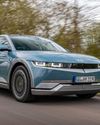
HYUNDAI IONIQ 5
The retro-inspired first instalment of Hyundai’s new-generation EV line-up has substance worthy of its head-turning styling.

Kia EV6
Hot on the heels of the Hyundai IONIQ 5, sister car the EV6 heralds a fresh new design direction for Kia, as well as the first of eleven electric cars (including seven dedicated) to launch globally by 2026.

BEAUTY... and the BEAST
With five rounds, nine teams and no fossil fuels; the first season of Extreme E is a no-holds barred proving ground for next-generation electric technology, and the result of some competing sustainability requirements.
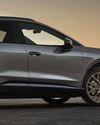
Audi prices Q4 e-tron
THE new Audi Q4 e-tron all electric SUV is now on sale on the UK, with prices starting at £40,750 OTR for the standard model and £42,250 OTR for the more swoopy, coupélike Sportback model.

2021 JAGUAR E-TYPE ELECTROGENIC
The Jaguar E-Type, dubbed “the most beautiful car ever made” by Enzo Ferrari needs little introduction to classic car fans the world over. Its design is so iconic that the E-Type is frequently credited as blurring the lines between definitions of art, sculpture and vehicular transportation.